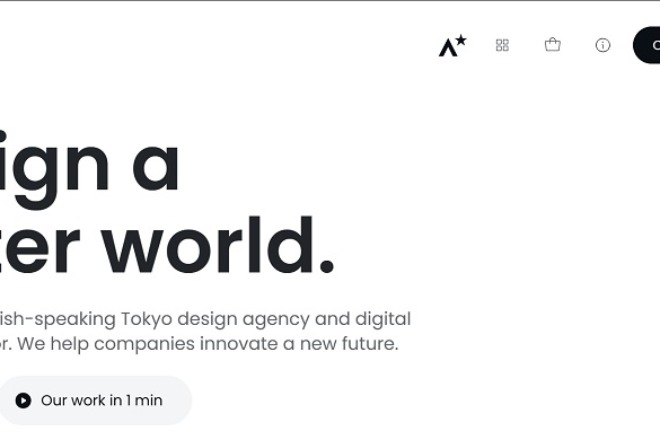If you’ve been in the design world for very long, then you are well aware of the company Adobe, founded in 1982. The two founders of the company, Charles Geschke and John Warnock, had previously left jobs at Xerox so they could develop PostScript language. This was a smart move on their part. By 1985, Apple computers had licensed PostScript for their LaserWriter printers. This made design friendlier and expanded the desktop publishing field exponentially.
Through PostScript, Adobe made it possible for offices to print in-house quite easily, and PostScript quickly became an international standard for printing from a computer. Adobe then began to release some basic fonts that also served as a standard in printing. At first, Adobe worked with Apple computers, but over time, it adapted to Windows systems as well. Today, Adobe works on both platforms.
Photoshop

Courtesy of Giphy
In 1988, Thomas and John Knoll developed Photoshop for Adobe Systems and sold it to Adobe. In its most basic form, Photoshop can edit raster images and keep changes on different layers, making it easy to make edits and deletions, as well as add new elements without completely getting rid of the original image. This is extremely useful for designers wishing to try out different options before figuring out what looks best. Of course, the abilities of Photoshop are a lot more complex than that, and as Adobe changed over the years, so did the design world.
Photoshop took photo editing to a level designers hadn’t seen before the development of this software. Rather than only being able to capture exactly what was on film, suddenly artists could merge two photos, change color, add additional objects and so much more. Design before software such as Photoshop and Illustrator had been flat. With these products, it took on a life of its own and became dynamic.
One area where Photoshop has had a big impact is in creating a single program that solves multiple design needs. You don’t have to adjust lighting in one program and color in another. Instead, you do it all on one screen.
By 1993, Adobe had come up with the Portable Document Format (PDF) and software. PDF added the ability for designers to take a snapshot of a page exactly as it appeared on their own screens and send it to anyone, including printing companies.
This revolutionized many things, including book publishing. With the introduction of PDF documents, it became much easier for the average person to become a book or magazine publisher. Simply create the document and save as PDF, upload and allow it to be printed by a publisher.
With time, printing companies would also create systems that allowed them to print on demand. Eventually, this led to companies such as Amazon’s CreateSpace, where writers and publishers could upload files and almost instantly be able to offer a book for sale. With instant printing, it barely takes a minute longer to have a bound copy available for sale than it would to print them ahead of time and have them ready to ship.
Adobe Takes on Design in All Its Forms
After its success in photo editing and publishing, Adobe turned its attention to expanding the design end of publishing. Adobe introduced a new product in December 1991 called Adobe Premiere. What was different about this new software was that it bundled together various types of design software. Adobe introduced Aldus, PageMaker and After Effects, as well as TIFF formatting for images.
Today, Adobe Premiere has been retitled Premiere Pro and is part of the Creative Cloud licensing program that Adobe has implemented in recent years. No longer do you have to download expensive software — instead, you can pay a monthly fee to access the software you need. This is a real boost to beginning designers and those that are not with large marketing companies.
Buying up Rivals
One way Adobe was able to overtake almost every aspect of design was by buying up its rivals and acquiring smaller companies. Some of the software it was able to incorporate into the Adobe umbrella this way includes ColdFusion, Flash, HomeSite and Authorware. This spurred it on to create Adobe Media Player and further develop Dreamweaver. With these additions, Adobe also set the standard for videos and website design.
What this meant for designers was that almost anything they wanted to design could likely be designed with an Adobe product. Need to create a short video to celebrate a family member’s birthday? Adobe Premiere Elements 15 is the software to use. Want to make a website for a client? Dreamweaver. Need to edit photos from that wedding you shot last weekend? Photoshop will help you smooth out any rough edges.
The Next 10 Years

Courtesy of Giphy
There is no denying that Adobe has shaped the design world by offering tools that make design work much easier. Now, designers can complete work in a fraction of the time it took before. The days of storyboards are long gone for most newspapers and magazines. Instead, InDesign is the way to lay out a publication and get it ready for press.
If you’ve been in design work any time at all, then it is almost guaranteed that you’ve used an Adobe product and will continue to do so. It will be interesting to see where Adobe goes next. It has already begun to look at the mobile world with its acquisition of PhoneGap, a mobile application system, which the company renamed Apache Cordova.
Adobe has more than a 30-year history of releasing new features and tools for designers around the world. One thing is certain, wherever this company goes next, it is sure to stay on the cutting edge of design software.
About The Author
Eleanor Hecks is the Editor-in-Chief of Designerly Magazine, an online publication dedicated to providing in-depth content from the design and marketing industries. When she's not designing or writing code, you can find her exploring the outdoors with her husband and dog in their RV, burning calories at a local Zumba class, or curled up with a good book with her cats Gem and Cali.
You can find more of Eleanor's work at www.eleanorhecks.com.



